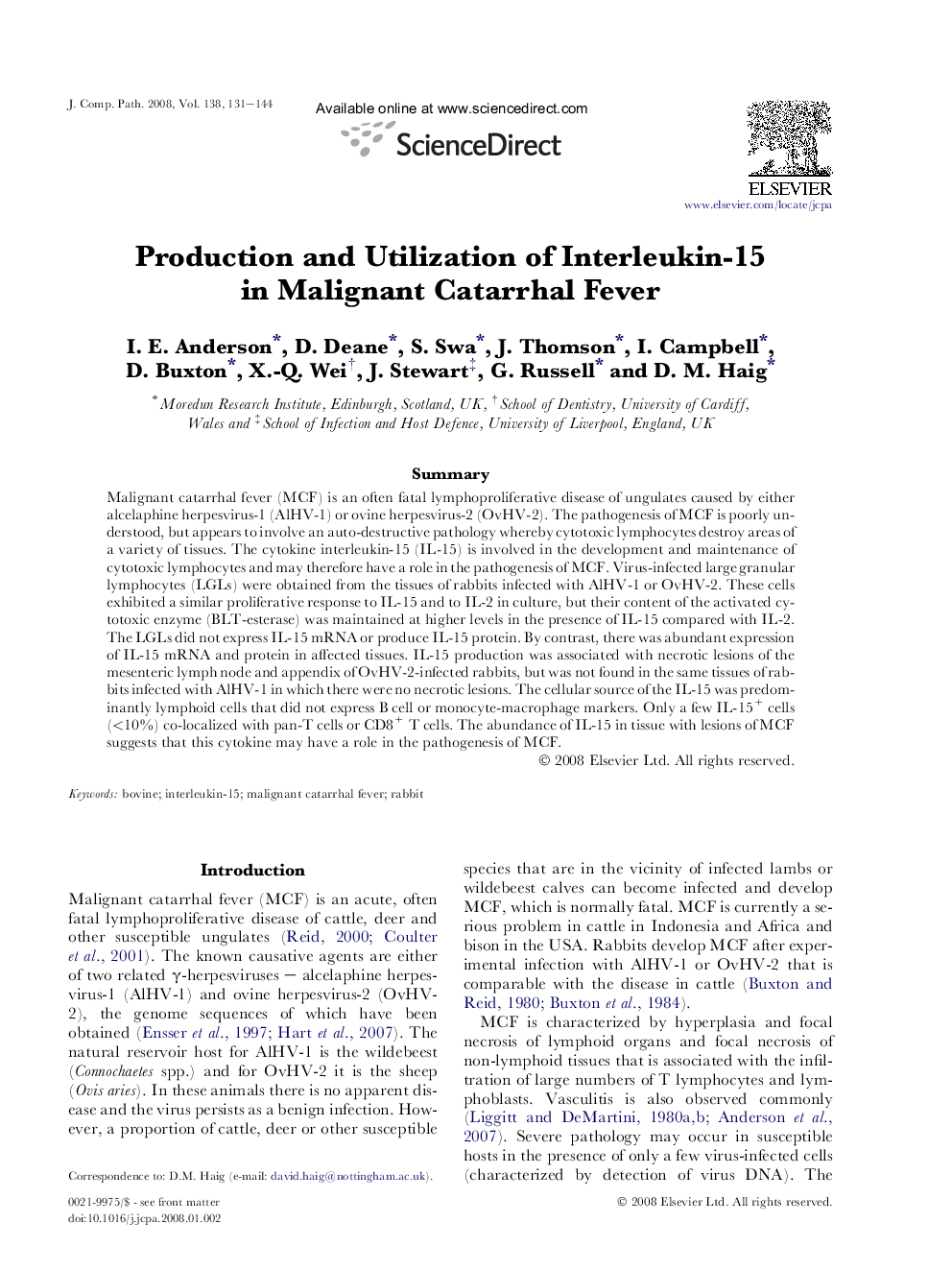| Article ID | Journal | Published Year | Pages | File Type |
|---|---|---|---|---|
| 2438655 | Journal of Comparative Pathology | 2008 | 14 Pages |
Abstract
Malignant catarrhal fever (MCF) is an often fatal lymphoproliferative disease of ungulates caused by either alcelaphine herpesvirus-1 (AlHV-1) or ovine herpesvirus-2 (OvHV-2). The pathogenesis of MCF is poorly understood, but appears to involve an auto-destructive pathology whereby cytotoxic lymphocytes destroy areas of a variety of tissues. The cytokine interleukin-15 (IL-15) is involved in the development and maintenance of cytotoxic lymphocytes and may therefore have a role in the pathogenesis of MCF. Virus-infected large granular lymphocytes (LGLs) were obtained from the tissues of rabbits infected with AlHV-1 or OvHV-2. These cells exhibited a similar proliferative response to IL-15 and to IL-2 in culture, but their content of the activated cytotoxic enzyme (BLT-esterase) was maintained at higher levels in the presence of IL-15 compared with IL-2. The LGLs did not express IL-15 mRNA or produce IL-15 protein. By contrast, there was abundant expression of IL-15 mRNA and protein in affected tissues. IL-15 production was associated with necrotic lesions of the mesenteric lymph node and appendix of OvHV-2-infected rabbits, but was not found in the same tissues of rabbits infected with AlHV-1 in which there were no necrotic lesions. The cellular source of the IL-15 was predominantly lymphoid cells that did not express B cell or monocyte-macrophage markers. Only a few IL-15+ cells (<10%) co-localized with pan-T cells or CD8+ T cells. The abundance of IL-15 in tissue with lesions of MCF suggests that this cytokine may have a role in the pathogenesis of MCF.
Related Topics
Life Sciences
Agricultural and Biological Sciences
Animal Science and Zoology
Authors
I.E. Anderson, D. Deane, S. Swa, J. Thomson, I. Campbell, D. Buxton, X.-Q. Wei, J. Stewart, G. Russell, D.M. Haig,
